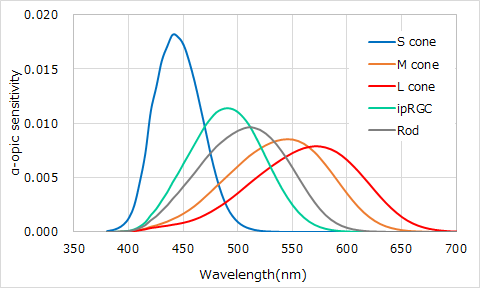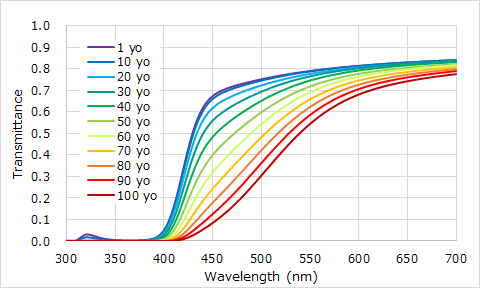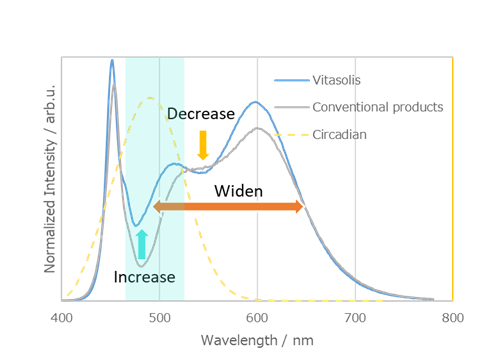Nichia Vitasolis, Enhanced White LEDs for Human Centric Lighting (HCL)
- By Ledrise Led Professional
- Mar 8, 2021

The Vitasolis™ technology from Nichia are LED light sources with spectrum meant to stimulate activity.
This development in based on recent research that has revealed in detail the relationship between light and human behavior. Humans can recognize the brightness and color of light while human circadian rhythms can be affected by different wavelengths, especially the blue-green area. For example, lighting has an effect on the level of activity throughout the day, including wake up in the morning, daytime activities, and nighttime sleep aids.
Vitasolis has a very natural white light and its spectrum contains more energy in the blue-green region, which helps control the human circadian rhythm. The spectral distribution of Vitasolis clearly illuminates the object while maintaining high light efficiency.
The Methodology of Vitasolis
1. Emphasizing the Cyan Region to create comfortable lighting for human intrinsic reaction
The circadian system, starts in the brain and regulates physiological rhythms throughout the body’s tissues and organs, affecting hormone levels and the sleep-wake cycle. Circadian rhythms are kept in sync by various cues, including light which the body responds to in a way facilitated by intrinsically photosensitive retinal ganglion cells (ipRGCs): the eyes’ non-image forming photoreceptors. Through ipRGCs, lights of high frequency and intensity promote alertness, while the lack of this stimulus signals the body to reduce energy expenditure and prepare for rest.
* International WELL Building Institute pbc and Delos Living LLC, 54 CIRCADIAN LIGHTING DESIGN, WELL Building Standard® v1 with Q1 2019 addenda.
* Duffy JF, Czeisler CA. Effect of Light on Human Circadian Physiology. 2009. Sleep Medicine Clinics, Volume 4, Issue 2, pp. 165-77.
* Ko CH, Takahashi JS. Molecular Components of the Mammalian Circadian Clock. 2006. Human Molecular Genetics, Volume 18, Issue 2, pp. R271-R277.
* Lucas RJ, Peirson SN, Berson DM, Brown TM, Cooper HM, et al. Measuring and Using Light in the Melanopsin Age. 2014. Trends in Neuroscience, Volume 31, Issue 1, pp. 1-9.
* Mistlberger RE, Skene DJ. Nonphotic Entrainment in Humans? 2005. Journal of Biological Rhythms, Volume 20, pp. 339-52.
It is well known that the sensitivity curve for ipRGC has the intensity peak in cyan region.
Figure 1. Spectral absorbance of human retinal photoreceptors.
* Lucas,R.J et al., Trends Neurosci. 37, 1(2014)
Additionally, there is a correlation between age and the transmittance in cyan region, due to yellowing of the crystalline lens at older ages.
Figure 2. Spectral distribution of the total transmittance of the aging human eye computed via the methods of van de Kraats.
* A Computerized Approach to Transmission and Absorption Characteristics of the Human Eye” CIE 203:2012 (incl. Erratum)
Based on the outcome of these studies, Nichia’s Vitasolis targets a comfortable light for all ages, specifically emphasizing the cyan region (470nm to 520nm) more than conventional LEDs for general lighting.
2. Widening the spectral breadth
The eye accommodation response with a broad spectrum is faster than that with a narrow one. Therefore, the visual fatigue with a broad spectrum is lower than that with a narrow one.* The broader spectrum is preferable for human eyes.
* K.R.Aggarwala et al., J. Opt. Soc. Am. A 12, 450(1995)
* C. Kubo et al., J. Illum. Engng. Inst. Jpn. 98, 79(2014)
Based on these studies, to create true human centric lighting, Nichia proposes Vitasolis. Despite the enhanced cyan energy, Nichia utilizes its experience in spectral control and phosphor technologies to enable a natural white color.
Figure 3. Example of Vitasolis spectrum.
Additionally, by measuring the level of physical and mental comfort and the level of stress, collaborative research between Nichia and Shinshu University in Nagano, Japan has found a tendency that people working in a room lit with the Vitasolis spectrum experienced reduced tiredness and stress, and an increase in work efficiency in terms of psychology and physiology.*
* U. Ayako et al., “分光分布の異なるLED照明が心身反応に与える影響” (Translated from Japanese, The influence of LED lighting with several spectrum to reaction for human mind and body, Proc. Annual Conf. IEI Jpn., ⑥-P12 (2018)
The test was conducted at 5,000K with several spectrums.
There are no direct results for other CCTs, however, Nichia developed the spectrum for other CCTs which have the same features as the 5000K spectrum.
The benefits of the Vitasolis technology provide a great opportunity for adoption in offices, schools, hospitals, and other locations that can benefit from improving circadian rhythm. Nichia envisions manufacturers combining Vitasolis into IoT systems and providing suitable lighting based on the time of day and desired environment. Nichia is confident that Vitasolis will truly enable the ideal human centric lighting experience.








